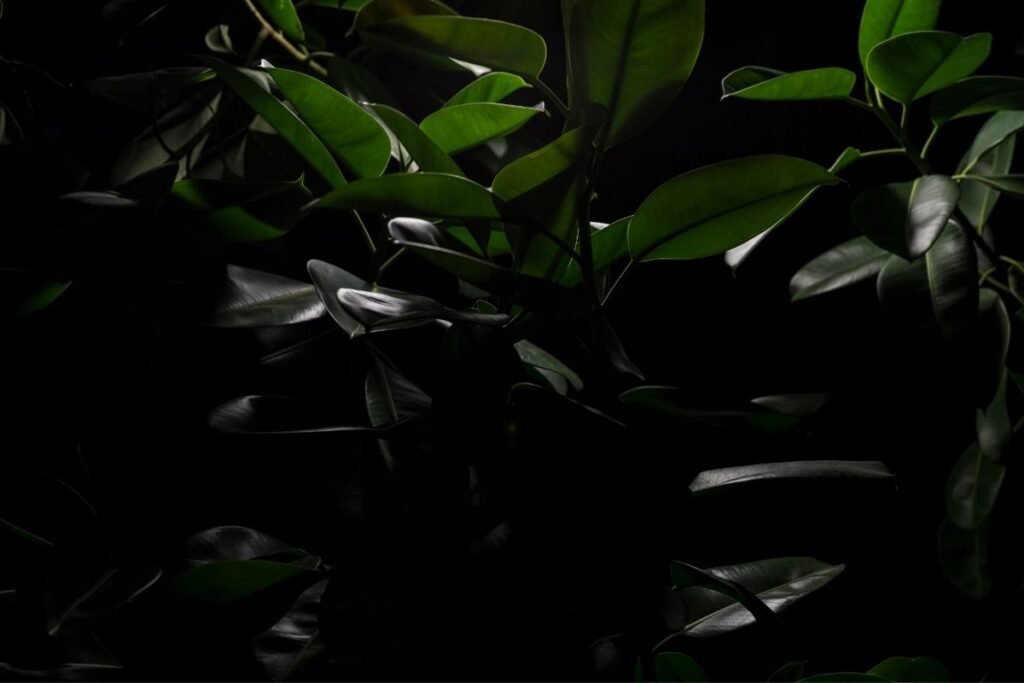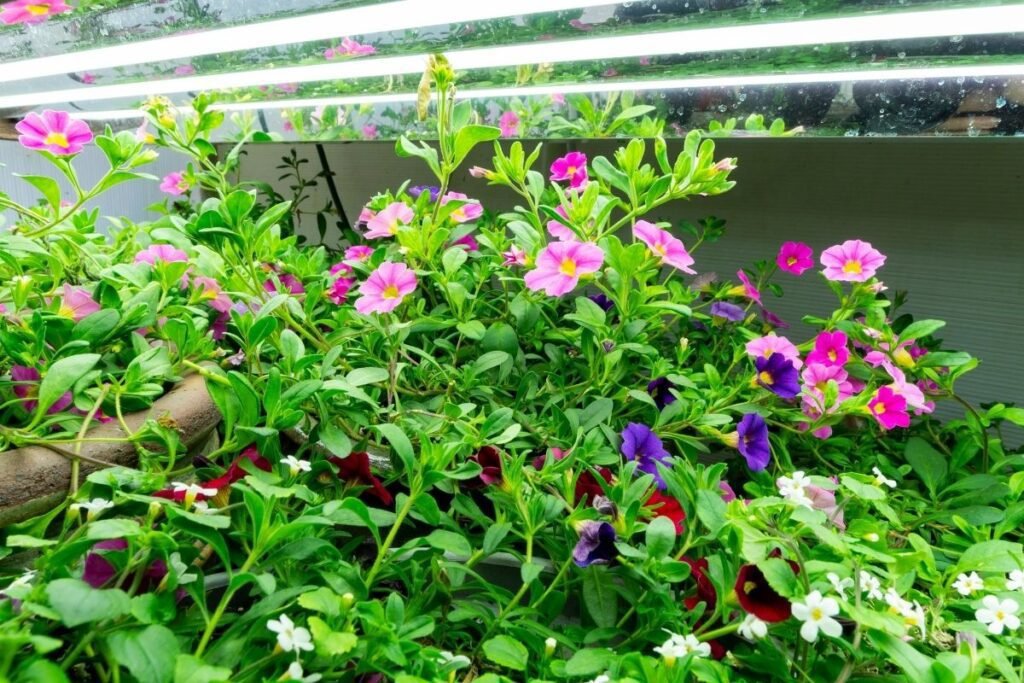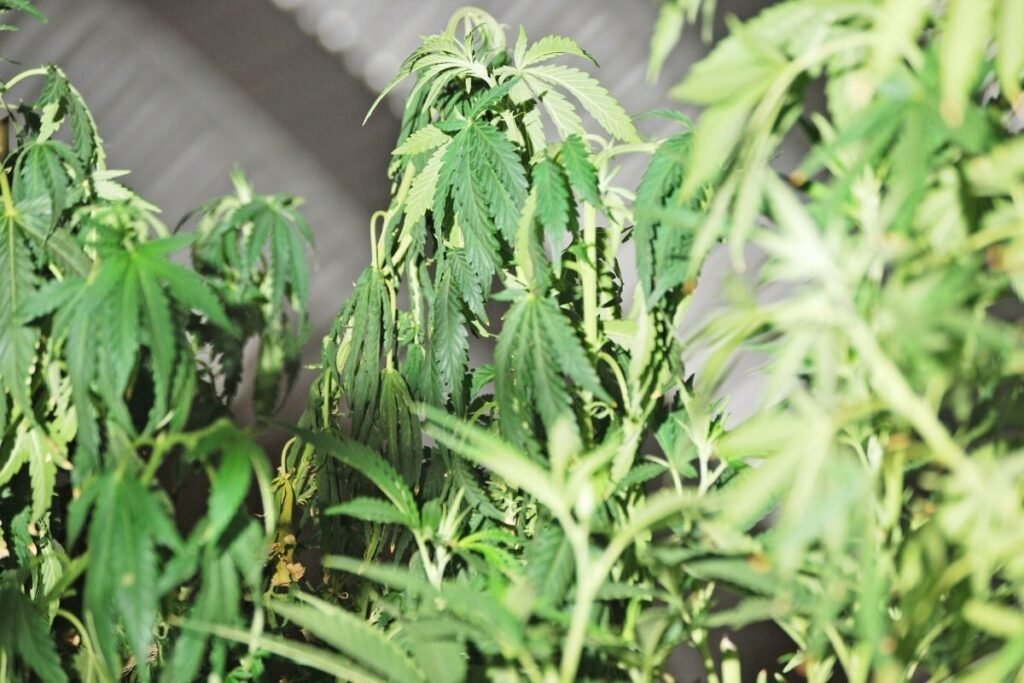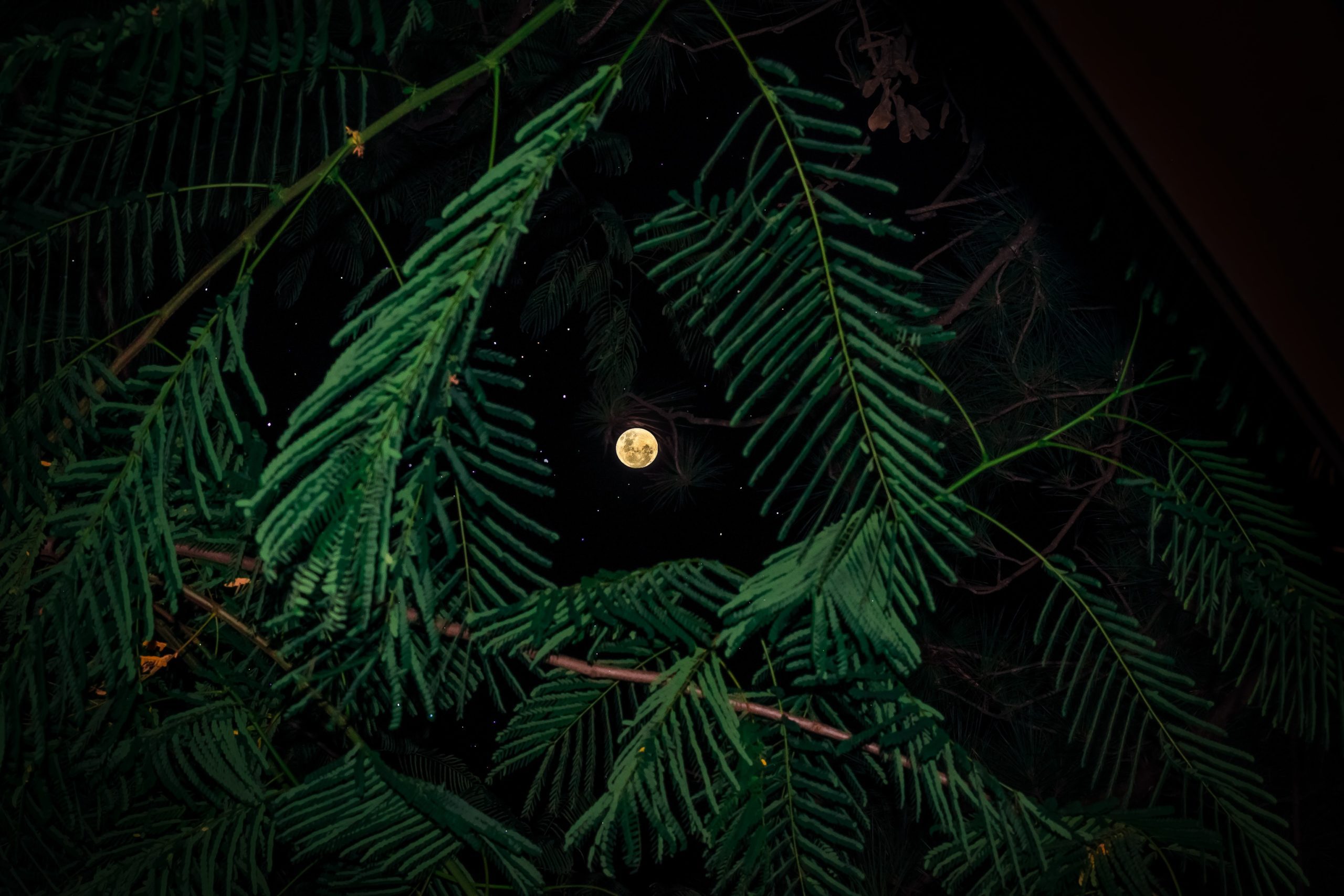You’re an astute observer, closely watching every single occurrence or nuanced movement and change your indoor plants undergo. And during this close and borderline obsessive monitoring of your house plants, you’ve noticed they appear to be drooping during the nighttime hours.
It’s subtle but certainly obvious, and it’s got you thinking, why do plants do this? And why do they appear more rigid, healthier, and more alive during the daytime?
Well in this post, you’ll find the answers to all your droopy or wilted plant questions.
Why do plants droop at night?
There are several schools of thought on why plants droop at night. Some say it’s due to turgidity, others hypothesize that plants are following some sort of specialized circadian rhythm, while many people put this phenomenon down to phototropism.
So how do each of these processes cause wilting and droopy leaves?
Let’s break them down.
Turgidity
We all identify a healthy plant as one that stands straight, appears rigid, and is somewhat inflexible. While on the other hand, a wilted, sagging, or droopy plant is often identified as being unhealthy or sick.
And perhaps this is one of the reasons you find yourself here, it’s only natural to think that a drooping plant is having a hard time of it.
But this may not necessarily be the case.

Drooping leaves that are observed at night or during the evening isn’t necessarily a sign that a plant is unwell. In fact, a drooping plant can be caused by something called turgidity, or lack thereof.
Turgidity, or its opposite flaccidity, is caused by the amount of water that is being taken up by a plant’s root system. The higher the uptake in water, something that occurs during the day, the more turgid or stiff a plant appears.
And the opposite is also true. The less a plant absorbs water through its roots the more flaccid, wilted, or droopy it will appear, a phenomenon that usually occurs during the nighttime.
So why does this happen? Well, water that is taken up through a plant’s roots is subsequently used in a variety of metabolic processes. One such metabolic process causes something called turgor pressure.
Turgor pressure is the pressure that is exerted by fluids against the cell membranes of a plant. It’s what gives a plant its rigid, stiff, and healthy look. Other water-using plant metabolic processes produce a number of by-products, some being oxygen, which is released through very small holes existing on the bottom of a plant’s leaves.
These holes are called stomata.
During the daylight hours, assuming the plant is able to uptake sufficient amounts of water, through the process of osmosis stomata open to allow respiration and ultimately evapotranspiration (a process of transpiration and subsequent evaporation of plant produced gases into the atmosphere).
And if available, the plant will continue to absorb slightly more water than it can respire, making the plant appear turgid and healthy.
On the other hand, if a plant is unable to uptake enough water because there simply isn’t enough available or because it’s nighttime and the plant discontinues respiration, it will close most of its stomata, slowing osmosis, and begin to appear wilted.
And why does a plant stop respiring during the evening hours?
Well, during the night there is no sunlight to drive photosynthesis or most other metabolic processes that produce gases and evapotranspiration.
So instead, the plant stops absorbing water through its roots and enters somewhat of a “sleep” stage. This is what causes a plant to appear wilted at night, there is more evaporation occurring than there is liquid uptake.
Nyctinastic movement

Just like you and me, plants have a circadian rhythm, a phenomenon known as nyctinasty. Nyctinastic movement, the circadian rhythmic movement of higher plants (those that have evolved vascular tissue unlike algae and Bryophytes), follows both the daytime and nighttime hours and responds to the onset of darkness.
This circadian rhythm impacts many of a plant’s biological and physiological processes including leaf movement, growth, reproduction, stomatal gas exchange, and will even determine the direction a flower faces.
And just like any other organism, for a plant’s circadian rhythm to work, it is dependent on its surrounding environment for stimuli.
For instance, when daytime turns to nighttime the temperature falls and the sun goes down. This change in a plant’s environment acts as stimuli, signaling to the plant that it is time to wind down and rest for the night.
Subsequently, day turning to night is the stimuli that halt water uptake, slows osmosis, and closes most of a plant’s stomata, leaving it looking wilted and droopy.
And when the sun rises again and night turns to day, diurnal light (the opposite of nocturnal darkness) and an increase in temperature and humidity cause a plant to “wake up”, open its leaves and flowers, and welcome the new day looking stiff, attentive, and healthy.
If you’re wondering how to increase humidity in a room to keep your plants perky, one of the easiest and cheapest ways is to set a tray of water in a sunny, warm place, and refill every few days.
Just as an example, if you’ve ever gardened outdoors and have grown sunflowers, you’ll understand exactly what nyctinastic movement looks like.
Sunflowers are known for a peculiar behavior in which their flowers not only track the sun but their petals also droop and close slightly during the evening and nighttime hours.
This type of plant movement is caused by a number of different phenomena. For one, leaf movement is facilitated by pulvini, a joint-like thickening at the base of a plant’s leaf or leaflet.
If you own a prayer plant or live in subtropical or tropical regions where Sensitive Plant (Mimosa pudica) grows, you’ve probably noticed pulvinus growth, it is the thickening at the base of a plant’s leaves located at the apex of the petiole (a leaf’s stalk that attaches it to the stem). Pulvini fill with water when a plant is turgid, and therefore flex during the day and go limp during the night.
For flowers, there are two different reasons why this kind of movement occurs. The first reason, as the sun comes up and the temperature increases the turgor pressure subsequently increases within the cells located at the base of a flower’s petals. As the cells expand and become more turgid, the petals straighten and the flower unfolds. The second reason is that flowers contain a chemical called auxin, a plant hormone that promotes cell elongation.
Auxin shies from the sun, so when the sun comes up and starts shining on a flower, auxin moves to the darker side of a plant causing the cells there to expand. This expansion is what compresses one side of a flower’s petals causing the less compressed side to extend and subsequently completely open a flower to the new day.
Phototropism

So now we’ve gone over the ins and outs of how a plant moves, have you ever at all wondered why they do this? Well, let’s use sunflowers again as an example. Like we’ve just discussed, a sunflower’s flower follows the sun’s trajectory through the sky.
The reason it does this is because of a plant behavior called phototropism. Simply put, phototropism is the growth of a plant in response to a light stimulus. A phenomenon mostly observed in plants but also a behavior exhibited by some fungi (just in case you’re a fungi fan like me 🍄).
So let’s break down why phototropism occurs and why it’s important to plant health.
Phototropism meshes in quite nicely with what we were just discussing, plant auxins. As I mentioned, auxins are light-sensitive and react when phototropism occurs. And just like the sunflower’s flowers, a plant’s leaves, petioles, and other extremities will move, contort, and respond to light stimuli. And this can happen in one of two ways, positive and negative phototropism.
Positive phototropism, the most common form, is growth towards a light source while negative phototropism, the less common form, is growth away from a light source.
Positive phototropism arranges a plant’s leaves and new shoots in a way that maximizes photosynthesis, exposes as many chloroplasts (plant cell organelles that convert light energy into chemical energy) to the light source as possible, promotes growth, and boosts a plant’s overall health and chances of survival.
Negative phototropism is mostly observed in vine-like plants, particularly those that grow tendrils. You probably know tendrils as curly-looking stem-like growth. Tendrils use negative phototropism to grow towards dark, solid objects, just like beans stalks do to cling to garden stakes.
So to tie this all back to a droopy, wilted plant.
During the nighttime, there is obviously no sunlight. Consequently, a plant has no light source to grow towards, and this is one of the reasons you will notice that houseplants and indoor plants will look droopier than they do during the day.
Plants that commonly droop during nighttime
There are a number of different plants that are commonly kept as houseplants which are notorious for freaking their owners out due to their droopy behaviors. Be aware, a tropical plant is more prone to drooping, so if you have a tropical houseplant understand that drooping isn’t necessarily a sign of underwatering, particularly if this behavior is only exhibited during nighttime hours.
To help you out, here are super common indoor plants that you may have in your home, that unless are continuing to droop into daylight hours, you won’t need to worry about:
- Prayer Plant (Maranta leuconeura varieties)
- Pilea Plant (Pilea peperomioides varieties)
- Peace Lily (Spathiphyllum wallisii varieties)
- Hydrangea plant (Hydrangea macrophylla varieties)
- False Shamrock (Oxalis triangularis varieties)
- Sensitive Plant (Mimosa pudica varieties)
Cannabis plant

I’d be remiss if I didn’t mention a commonly indoor-grown plant in this drooping plant post, the Cannabis plants. Cannabis plants are notorious for exhibiting wilting and drooping leaves during nighttime hours. And if you have a home grow underway, understand that a marijuana plant will appear wilted or will close its leaves at nighttime.
If these tendencies continue during the day or while you have your grow lights on, it’s probably a good sign that your plant is experiencing water loss. If this is the case, ensure its growing medium or potting soil is kept moist, but certainly not saturated. You want enough moisture within the growing medium so that the plant has access to enough water but isn’t overwatered.
Overwatering will inhibit the marijuana plant’s ability to uptake nutrients or, even worse, could eventually lead to root rot. If you are unsure how much water is too little or too much, grab yourself a soil moisture meter to optimize your watering regime.
Conclusion
So, if you notice your plants getting droopy during the evening hours, now you know what’s up. Droopiness is a natural occurrence that is driven by a plant’s biological and physiological processes. And, unless droopiness persists into the daytime hours, indicating that it may need a bit more TLC (not THC 😉), there really isn’t anything to worry about.
Oh, BTW. If your indoor plant is still wilting or appears droopy even when it’s not nighttime, why not check out our post on what to do if your houseplant is droopy.
Happy growing!
more about common questions
- How To Get Rid Of Scale On Plants
- How To Treat A Magnesium Deficiency In Cannabis
- It’s Not O-K: Potassium Deficiency in Cannabis
- How To Make Pothos Fuller (In 5 Minutes)
- Save Your Overwatered Monstera In 4 Steps (And How Not To Do It Again)
- Scale On Monstera: What To Do And How To Save It
- Common Calathea Problems and How to Fix Them


Hey, Marcia! Thanks for reading :) gosh, that's a great idea to double up on your watering globe and spike.…